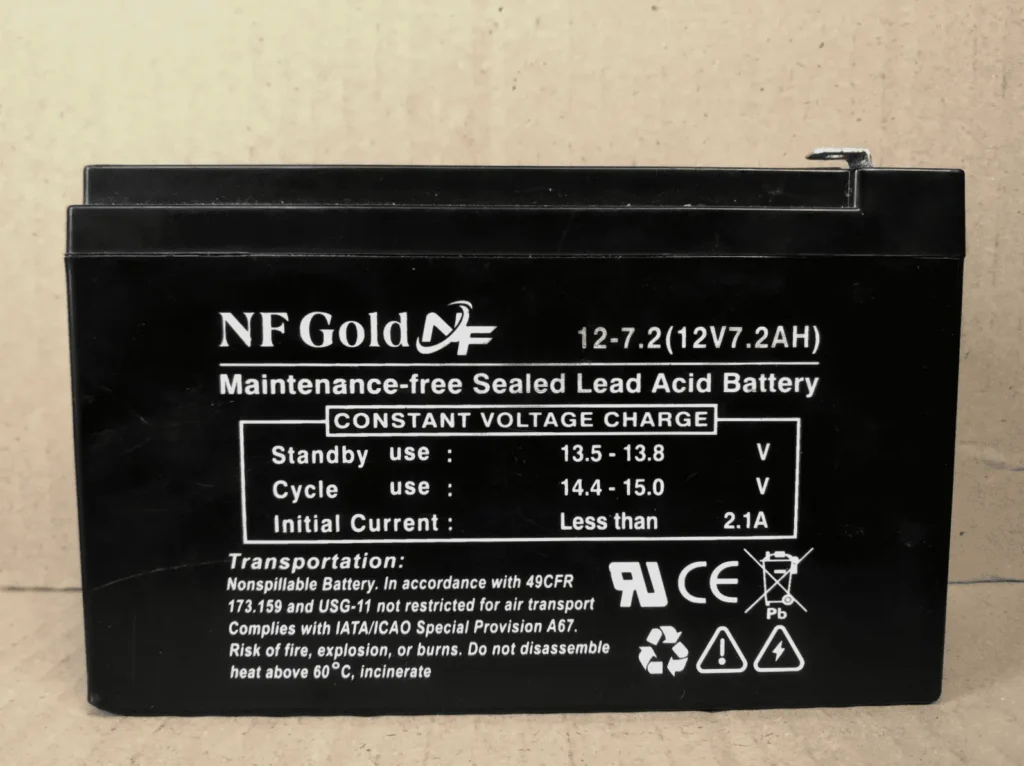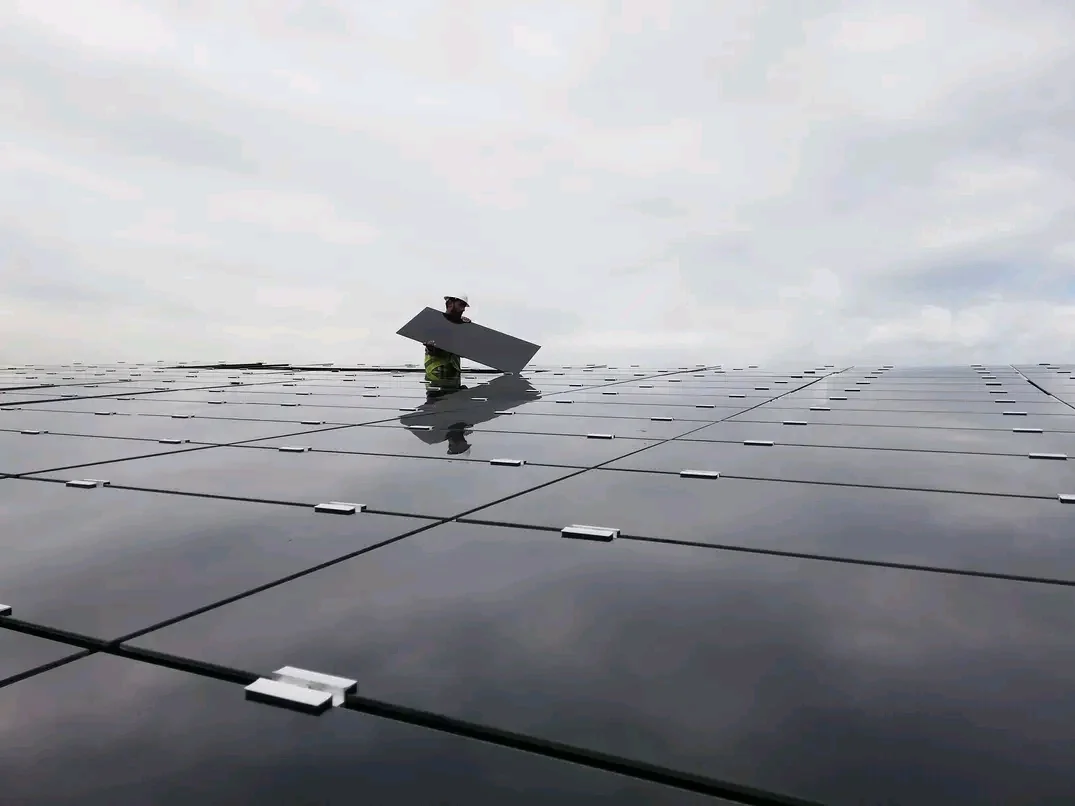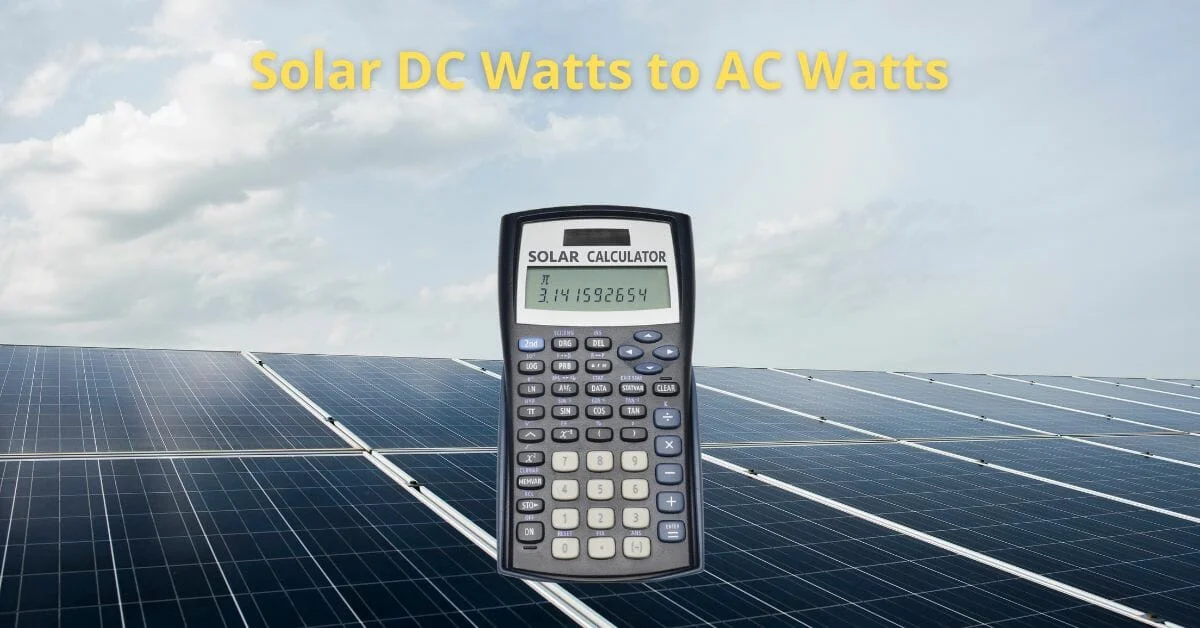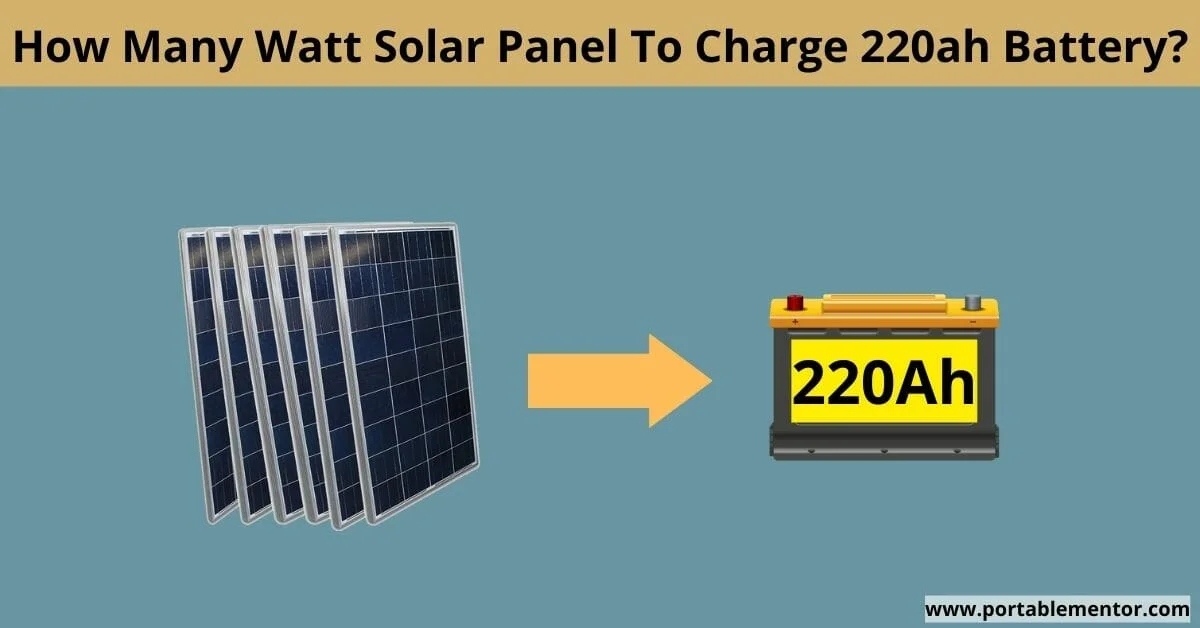Use our solar battery charge time calculator to find out how long will it take to charge a battery with solar panels.
Solar Battery Charge Time Calculator
Optional: If left blank, we’ll use a default value of --- 50% DoD for lead acid batteries and 100% DoD for lithium batteries.
Note: The estimated charge time of your battery will be given in peak sun hours. For more information on what peak sun hours are and how to calculate them, please refer to our in-depth guide.
How to use our solar battery charge time calculator?
To use the calculator, follow these steps:
1. Enter the total solar system size in watts: If you have multiple solar panels connected together, add their rated wattage and enter the total value in watts into the calculator.
2. Enter the battery capacity in amp-hours (Ah): If the battery capacity is given in watt-hours, divide the watt-hours by the battery voltage to find out the amp-hours. For example, enter 50 for a 50Ah battery.
3. Enter the battery voltage (V): Is this a 12, 24, or 48-volt battery? Enter 12 for a 12V battery.
4. Select your battery type from the options provided.
5. Enter the battery depth of discharge (DoD): Battery DoD indicates how much of the battery capacity is discharged relative to its total capacity. For example, enter 50 for a battery that is half discharged, and enter 100 for a battery that is fully discharged (which is achievable only with lithium batteries).
6. Select the charge controller type: Which type of charge controller are you using? PWM or MPPT?
7. Click on the 'Calculate' button to find out the estimated battery charge time.
Note: The calculator assumes the following efficiencies: 1. Battery charge efficiency - Lead-acid --- 85%, lithium --- 95% 2. Charge controller efficiency - PWM --- 80%, MPPT --- 95% 3. Solar panel output efficiency - 80%
how to calculate solar panel charge time?

Dividing the battery amp-hours (Ah) by the solar panel's output amps (Ah ÷ charging amps) is the most inaccurate way to calculate the battery charge time. Instead, use this formula:
Formula
Solar battery charge time = (Battery Ah × Battery volts × Battery DoD) ÷ (Solar panel size (W) × charge controller efficiency × battery charge efficiency × 0.8)
This method takes into account most of the real-world factors that affect the battery's charge time.
Or follow these steps:
Steps
Let's say you have a 12v 100ah lead acid battery with 50% Depth of discharge, a 100-watt solar panel, and an MPPT charge controller.
1. Multiply 12 by 100 to convert the battery capacity into watt-hours.
12 × 100 = 1200 watt-hours
2. Multiple the battery capacity in watt-hours by its depth of discharge.
1200 × 50% = 600 watt-hours
3. Multiply the solar panel rated watts by the charge controller efficiency. PWM --- 80%, MPPT --- 95%.
100 × 95% = 95 watts
4. Take into account for battery charge efficiency rate by multiplying the battery charge efficiency by the solar panel's output (W) after the charge controller.
Based on directscience.com data, on average:
- Lead-acid batteries have a charge efficiency ≈ 80 − 85%
- Lithium-ion batteries have a charge efficiency ≈ 90 − 95%
95 × 85% = 80 watts
5. Take into account the solar panel's output efficiency. Solar panels are designed to produce their rated wattage under ideal conditions, but in real-world conditions, on average, you'd receive about 80% rated output from your solar panel.
80 × 80% = 65 watts
6. Now divide the battery capacity after DoD by the solar panel output (after taking into account the losses).
600 ÷ 65 = 9.2 hours
Turns out, 100 watt solar panel will take about 9 peak sun hours to fully charge a 12v 100ah lead acid battery from 50% depth of discharge.
how fast should you charge your battery?
Deep cycle or solar batteries are designed to charge and discharge at a specific rate, which is referred to as the c-rating. It's important to note the recommended charge time for different types of batteries:
- Lithium (LiFePO4) ≈ 2 hours
- Lead acid ≈ 20 hours
- AGM ≈ 5 hours
Charging your battery at a higher rate than what's recommended can increase the battery's internal cell temperature, which will ultimately decrease the battery's overall health and charging efficiency.
Note: Refer to your battery's data sheet to find its c-rating or maximum charge rate.
Related post: Battery Charge And Discharge Rate Calculator: C-Rating To Amps
Why non of the above methods guarantee 100% accuracy?
Calculating the accurate charge time for a battery is a challenging task because there are numerous real-world factors that can impact it.
Some of these factors include the state of charge of the battery, the absorption stage for lead acid and lithium batteries, solar panel output efficiency, and PWM charge controller efficiency.
1. Lead acid battery charge efficiency will depend on its state of charge (SoC).
The below chart illustrates the lead acid battery charge efficiency based on its state of charge.
lead acid battery charge efficiency will decrease drastically after 70-80% charge, that's because of the absorption stage.
2. Absorption stage for lead acid and lithium battery: During the absorption stage, which is a phase in the battery charging process, a fixed amount of time is used to charge the battery, regardless of the amount of input power.
For lead acid batteries, this stage typically lasts between 2-3 hours and helps the battery reach its total capacity from 80% charge. The absorption stage is important for the health of the battery, as it helps to balance the battery cells and prevent damage.
However, lithium batteries do not require an absorption stage, although charge controllers may perform a brief 20-30 minute absorption charge to balance the battery cells.
3. Solar panel output efficiency will depend on many factors, such as the tilt angle of the panel, weather conditions (e.g., sunny or cloudy), and ambient temperature.
For example, if the panel is not tilted towards the sun, it may not receive optimal sunlight, resulting in lower efficiency. Similarly, if it's cloudy or there is low light, the panel's output will decrease.
Moreover, solar panels become less efficient at higher temperatures, so if the ambient temperature is high, the panel's output may be reduced.
4. The efficiency of a PWM charge controller can be affected by different factors, such as temperature and the voltage difference between the solar panels and the battery.
A PWM charge controller can only lower the high voltage to match the battery voltage for safe charging but cannot increase the amps. As we know power (watts) = Amps × Volts.
In contrast, an MPPT charge controller can reduce the voltage and boost the amps to compensate for any losses.
High temperatures can cause the controller's efficiency to decrease, while a greater voltage difference between the solar panels and the battery can lead to lower charging efficiency. This is because the solar panel generates a higher voltage at higher temperatures.
It's important to consider these factors when estimating the battery charge time using a PWM charge controller.
6 Tips to increase solar battery charge efficiency
Here are some tips on how to increase solar panel charge efficiency:
1. Use an MPPT Charge Controller
An MPPT (Maximum Power Point Tracking) charge controller helps to increase the solar battery charge efficiency.
It tracks the maximum power point of the solar panel and regulates the voltage and current to ensure the maximum amount of energy is extracted from the panels.
Compared to PWM (Pulse Width Modulation) controllers, MPPT controllers are more efficient, especially when it comes to charging batteries in low-light conditions. (source)
2. Ensure Proper Panel Orientation
Proper orientation of solar panels is crucial to maximizing the solar battery charge efficiency. Ideally, panels should face south or north if you live in the southern hemisphere.
Panels should also be angled to match your latitude. By doing this, the panels will receive maximum sunlight and increase the amount of energy generated. (source)
3. Keep Panels Clean

Dirt, dust, and debris can accumulate on the surface of solar panels and reduce their efficiency. (source)
Cleaning your solar panels regularly can help to increase their efficiency and improve their lifespan.
Use a soft cloth or a specialized solar panel cleaning kit to gently remove any dirt or debris.
4. Use High-Quality Components
Using high-quality components such as cables, connectors, and charge controllers can help to increase the efficiency of solar battery charging.
Low-quality components may not perform as well and may reduce the amount of energy generated by the solar panels.
5. Monitor and Maintain Batteries
Regular monitoring and maintenance of solar batteries are essential to maximizing their efficiency. Check the batteries voltage and charge levels regularly and ensure they are kept at optimal levels.
Overcharging or undercharging can damage batteries and reduce their lifespan. If your solar system has a battery management system, ensure it is properly calibrated for maximum efficiency.
6. Install a Battery Temperature Sensor
Solar battery charging efficiency can be impacted by temperature changes. (source)
Installing a battery temperature sensor can help to ensure the batteries are kept at the optimal temperature for charging.
It can also help to prevent overheating or freezing, which can damage the batteries.
How Long To Charge 12v Battery With Solar Panel?
Here’s a chart showing how long will it take to charge a 12v battery with different capacity lead acid and lithium batteries using 100 watt solar panel with an MPPT charge controller.
12v lead acid battery
| 12v battery capacity | Solar panel size | Estimated Charge Time |
|---|---|---|
| 20Ah | 100 watt | 2 Peak sun hours |
| 50Ah | 100 watt | 4.5 Peak sun hours |
| 70Ah | 100 watt | 6 Peak sun hours |
| 100Ah | 100 watt | 9 Peak sun hours |
| 120Ah | 100 watt | 11 Peak sun hours |
| 150Ah | 100 watt | 14 Peak sun hours |
| 200Ah | 100 watt | 18 peak sun hours |
| 220Ah | 100 watt | 20 Peak sun hours |
| 300Ah | 100 watt | 27 Peak sun hours |
| 400Ah | 100 watt | 36 Peak sun hours |
Summary
- 12v lead acid battery from 50% depth of discharge will take anywhere between 2 to 20 peak sun hours to get fully charged with a 100 watt solar panel.
12v Lithium (liFePO4) battery
| 12v battery capacity | Solar panel size | Estimated Charge Time |
|---|---|---|
| 20Ah | 100 watt | 3 Peak sun hours |
| 50Ah | 100 watt | 8 Peak sun hours |
| 70Ah | 100 watt | 12 Peak sun hours |
| 100Ah | 100 watt | 17 Peak sun hours |
| 120Ah | 100 watt | 20 Peak sun hours |
| 150Ah | 100 watt | 25 Peak sun hours |
| 200Ah | 100 watt | 33 peak sun hours |
| 220Ah | 100 watt | 36 Peak sun hours |
| 300Ah | 100 watt | 50 Peak sun hours |
| 400Ah | 100 watt | 66 Peak sun hours |
Summary
- 12v lithium battery from 100% depth of discharge will take anywhere between 3 to 30 peak sun hours to get fully charged with a 100 watt solar panel.
Full article: How Long To Charge 12v Battery With Solar Panel?
How Long To Charge 100ah Battery
Here's a chart showing how long to charge 100ah lead acid and lithium batteries with different size solar panels.
| Solar panel size | Estimated charge time (for 100ah lead acid) | Estimated charge time (for 100ah lithium) |
|---|---|---|
| 20 watt | 45 Peak sun hours | 83 peak sun hours |
| 50 watt | 18 Peak sun hours | 33 peak sun hours |
| 100 watt | 9 Peak sun hours | 17 peak sun hours |
| 200 watt | 5 Peak sun hours | 8 peak sun hours |
| 300 watt | 3 Peak sun hours | 5.5 peak sun hours |
| 400 watt | 2.5 Peak sun hours | 4 peak sun hours |
| 500 watt | 2 Peak sun hours | 3.5 peak sun hours |
Summary
- 12v 100ah lead acid battery from 50% depth of discharge will take between 2 to 40 peak sun hours to get fully charged with solar panel.
- 12v 100ah lithium battery from 100% depth of discharge will take between 4 to 80 peak sun hours to get fully charged with solar panel.
Full article: How Long To Charge 100Ah Battery?
How Long To Charge 200ah Battery
Here's a chart showing how long to charge 200ah lead acid and lithium batteries with different size solar panels.
| Solar panel size | Estimated charge time (for 200ah lead acid) | Estimated charge time (for 200ah lithium) |
|---|---|---|
| 50 watt | 36 Peak sun hours | 66 peak sun hours |
| 100 watt | 18 Peak sun hours | 34 peak sun hours |
| 200 watt | 10 Peak sun hours | 16 peak sun hours |
| 300 watt | 6 Peak sun hours | 10 peak sun hours |
| 400 watt | 5 Peak sun hours | 8 peak sun hours |
| 500 watt | 4 Peak sun hours | 7 peak sun hours |
Summary
- 12v 200ah lead acid battery from 50% depth of discharge will take between 4 to 30 peak sun hours to get fully charged with solar panel.
- 12v 200ah lithium battery from 100% depth of discharge will take between 7 to 60 peak sun hours to get fully charged with solar panel.
Full article: How Long To Charge 200ah Battery?
how long to charge 120ah battery?
Here's a chart showing how long to charge 120ah lead acid or lithium battery using different size solar panels.
| Solar panel size | Estimated charge time (for 120ah lead acid) | Estimated charge time (for 120ah lithium) |
|---|---|---|
| 50 watt | 22 Peak sun hours | 40 peak sun hours |
| 100 watt | 11 Peak sun hours | 20 peak sun hours |
| 200 watt | 5.5 Peak sun hours | 10 peak sun hours |
| 300 watt | 4 Peak sun hours | 7 peak sun hours |
| 400 watt | 3 Peak sun hours | 5 peak sun hours |
| 500 watt | 2.5 Peak sun hours | 4 peak sun hours |
Summary
- 12v 120ah lead acid battery will take anywhere between 3 (using 300 watt solar panel) to 22 peak sun hours (using 50 watt solar panel) to get fully charged.
- 12v 120ah lithium battery will take anywhere between 5 (using 300 watt solar panel) to 40 peak sun hours (using 50 watt solar panel) to get fully charged.
How Long To Charge 50ah Battery?
Here's a chart showing how long to charge 50ah lead acid or lithium battery using different size solar panels.
| Solar panel size | Estimated charge time (for 50ah lead acid) | Estimated charge time (for 50ah lithium) |
|---|---|---|
| 50 watt | 9 Peak sun hours | 17 peak sun hours |
| 100 watt | 5 Peak sun hours | 8 peak sun hours |
| 200 watt | 2.5 Peak sun hours | 4 peak sun hours |
| 300 watt | 2 Peak sun hours | 3 peak sun hours |
| 400 watt | 1.5 Peak sun hours | 2.5 peak sun hours |
| 500 watt | 1 Peak sun hours | 2 peak sun hours |
Summary
- 12v 50ah lead acid battery will take about 5 peak sun hours to get fully charged using 100 watt solar panel.
- 12v 50ah lithium battery will take about 8 peak sun hours to get fully charged using 100 watt solar panel.
How Long To Charge 300ah Battery?
Here's a chart showing how long to charge 300ah lead acid or lithium battery using different size solar panels.
| Solar panel size | Estimated charge time (for 300ah lead acid) | Estimated charge time (for 300ah lithium) |
|---|---|---|
| 50 watt | 55 Peak sun hours | 100 peak sun hours |
| 100 watt | 27 Peak sun hours | 50 peak sun hours |
| 200 watt | 14 Peak sun hours | 25 peak sun hours |
| 300 watt | 9 Peak sun hours | 17 peak sun hours |
| 400 watt | 7 Peak sun hours | 13 peak sun hours |
| 500 watt | 6 Peak sun hours | 10 peak sun hours |
Summary
- 12v 300ah lead acid battery will take about 9 peak sun hours to get fully charged from 50% depth of discharge using 300 watt solar panel.
- 12v 300ah lithium battery will take about 17 peak sun hours to get fully charged from 100% depth of discharge using 300 watt solar panel.



